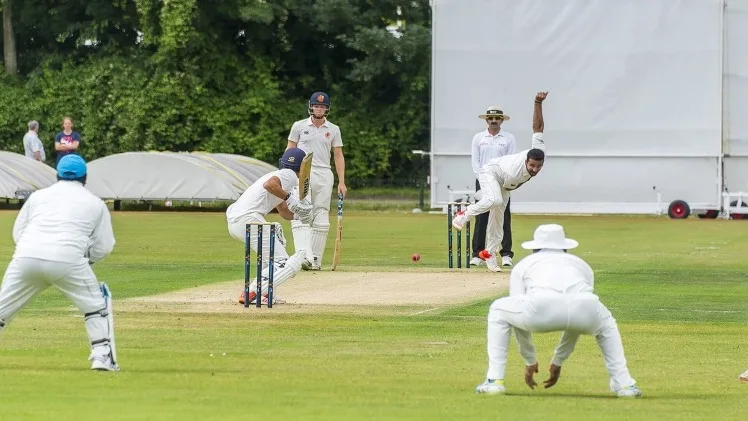Cricket, a sport that has captured the hearts of millions worldwide, is played in various formats, each with its unique set of rules and requirements. From the traditional Test matches to the fast-paced Twenty20 (T20) games, the scope of the game and equipment needs vary vastly.
Your cricket kit is one of the various aspects to tailor according to the game. Cricket kits play a crucial role in helping a player adapt to the demands of the game. And a player must learn this to perform their best on the field.
So, here’s an article exploring how cricket kits differ across different game formats and the specific considerations you should take into account when designing them.
I. Test Matches
Test Matches are the longest format of the game. They require endurance, concentration, and a high level of skill. Traditionally, Test cricket has been played in whites, with players donning all-white attire. The white cricket kit has become iconic, symbolising the heritage and traditions of the sport.
However, in recent years, some teams have introduced coloured jerseys for Test matches, aiming to bring a fresh and vibrant look to the game while maintaining the spirit of the traditional format.
Test matches can last up to five days, and players spend long hours on the field. Therefore, the primary focus of Test cricket kits is comfort and durability. The fabric used in Test cricket kits is often lightweight, breathable, and sweat-wicking to keep players cool and comfortable throughout the match.
Additionally, the kit includes ample padding and protection, such as helmets, pads, and gloves, to safeguard the players during long and intense spells of batting and fielding.
II. One-Day Internationals
One-Day Internationals (ODIs) is a more condensed format, where each team has limited overs to bat and bowl. ODIs have seen significant changes in cricket kits over the years.
Initially, players used to wear all-white attire, similar to Test matches.
However, with the introduction of coloured clothing, ODIs witnessed a revolution in cricket kit design. Teams started adopting vibrant colours, often representing their national flag or team identity.
The design of ODI cricket kits aims to enhance visibility and make it easier for players and spectators to differentiate between teams. The jerseys feature bold and contrasting colours, with team logos and player names prominently displayed. The fabric used in ODI kits is lightweight and moisture-wicking, allowing players to remain comfortable and dry even in hot and humid conditions.
Additionally, ODI kits may have more tailored fits, allowing for greater freedom of movement for quick running between the wickets and fielding.
III. Twenty20
Twenty20 (T20) cricket is the most fast-paced and explosive format of the game, which has further revolutionised cricket kits. T20 cricket is known for its high-scoring matches and aggressive gameplay, where players must adapt quickly and make rapid decisions. As a result, the cricket kits for T20 matches are designed to reflect this dynamic nature of the format.
T20 cricket kits often feature striking colours and bold designs, capturing the attention of fans and viewers. The jerseys may include vibrant patterns, innovative graphics, and attention-grabbing sponsor logos.
Thus, the fabric used in T20 kits is lightweight, stretchable, and breathable, providing maximum flexibility and comfort for players during fast-paced movements. Quick-drying materials are also incorporated to manage sweat effectively, allowing players to stay focused and perform at their best.
In addition to the jerseys, the cricket kit for T20 matches may include shorter and lighter pads, gloves, and helmets. These adaptations reduce weight and allow players to move swiftly and react faster in the field.
Also, T20 cricket kits often feature specific features for players, such as pockets for storing mouthguards or sunglasses, as they may need to switch between batting, bowling, and fielding quickly.
IV. Branding and Sponsorship
The last aspect that influences cricket kits is branding and sponsorship. Not in one or two, it plays an important role in all game formats. The logos of team sponsors are prominently displayed on the jerseys, helping to generate revenue for the teams and the sport as a whole. Sponsors may also provide input into the design and colour schemes of the cricket kits to align them with their brand image.
In recent years, there has been an increased emphasis on sustainability and eco-friendly practices in various industries, including sports. Cricket kit manufacturers have started exploring sustainable materials and manufacturing processes to reduce their environmental impact. It includes using recycled fabrics, reducing water consumption, and incorporating eco-friendly dyes and printing techniques.
Sustainable cricket kits contribute to environmental conservation and align with the growing global focus on responsible consumption.
Conclusion
Cricket kits are not just clothing; they are essential tools that help players adapt to the specific requirements of different formats of the game. Each format has unique considerations, from the comfort and durability of Test cricket kits to the vibrant and dynamic designs of T20 cricket kits.
As cricket continues to evolve, so will the design and functionality of cricket kits, with a primary focus on enhancing players’ abilities. Being better equipped helps them perform at their best, and fans can proudly celebrate the sport.
If you are a cricket fan and want to buy a cricket kit, you can reach out to Season Sports. Not only cricket kits, but they also offer a diverse range of cricket equipment, from cricket bags to bats to helmets.
We hope you find your dream cricket kit soon.



